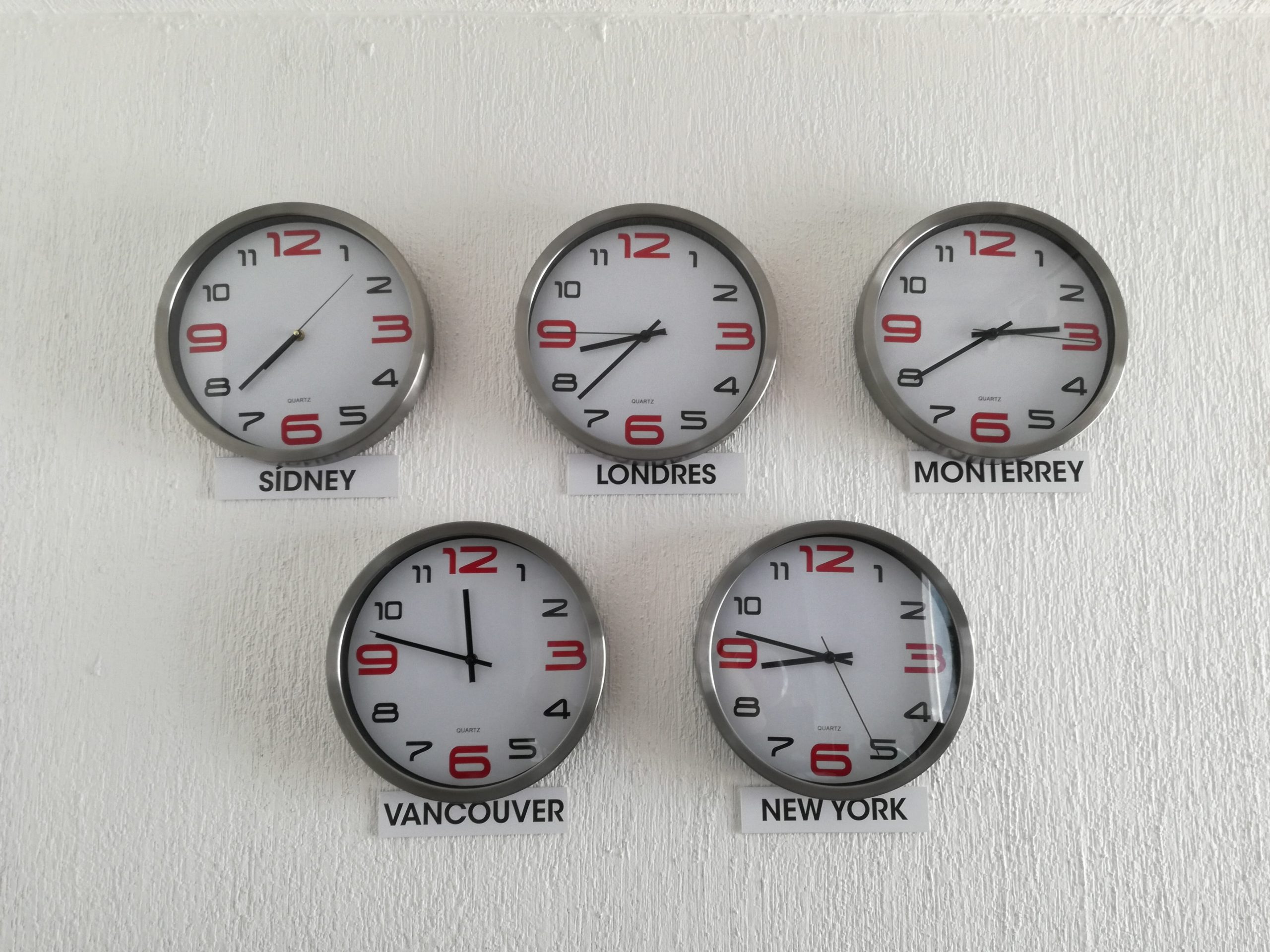It’s more common than ever for teams to work remotely and if you happen to work in a such team, you can quickly notice that along with many benefits, remote teams also face unique challenges, such as remote team communication.
The good news for you as an employer is that having a remote team provides you with access to a talent pool which is not restricted by location. As an employee, there’s good news too, one is, you have the freedom and flexibility to work without having to commute or stay away from family. But that’s just on paper, in real life, things are a bit different.
If your team doesn’t meet face to face, then there’s a pretty high chance that communication will suffer. If team members are siloed, you might as well forget about mutual trust and collaboration and with remote teams, it’s usually difficult to see which workers are overwhelmed with work and those whose skills are underutilized.
But in spite of these and many other challenges, all manners of stats have shown that remote work is here to stay. Because more and more companies are seeing that the advantages far outweigh the challenges of having a remote team.
Why should you even care about remote work?
Because the numbers don’t lie. The stats say there’s a steady rise in the number of people jumping on the remote work bandwagon in the US. More and more companies, especially new ones are seeking freelancers and independent contractors driving the demand for remote workers up by 81 percent between 2014 and 2017 according to data from Upwork.
A 2017 Employee Benefits Report by the Society for Human Resource Management revealed that over 60 percent of companies now offer telecommuting benefits to those who want it.

Research by Nicholas Bloom, a Stanford professor of Economics has also shown that remote work actually works, it decreases worker attrition and increases productivity. He pointed out in his research that remote workers concentrate better and on the average took less sick days or prolonged breaks when compared to their on-site counterparts and it saves employers about $2000 per annum, per employee, on real estate costs.
Remote work’s major downside: Miscommunication
In simple terms miscommunication arises when we are unable to understand one another in a way that drives progress in the direction of the overall goal of the company– that goal could increase in sales for instance, or increase in word-of-mouth adverts etc.
These communication challenges are even more pronounced with companies that work with remote teams and expectedly the damage from such challenges is much more severe.
Various studies have pointed this out, one such study published by the Harvard Business Review shows that remote workers who don’t get to interact well and as such always get incomplete stories and never the full picture are more disconnected or alienated when compared to onsite workers.
How can you solve these communication issues as a team leader? How do you ensure that everyone is being carried along, contributing their quota, working towards a clearly communicated overall goal?

One way is to simply scrap the concept of remote teams in its entirety and ensure that all employees are on site, after all you’ll get to interact with them physically. But that’s not going to be easy, worker attrition will increase and you’ll lose valuable talents.
So the only other feasible option is to identify the issues, their effects and lay out clear, time bound strategies to solve such problems. And finally to double down on those strategies.
Here are 4 communication problems leaders encounter with remote teams and some ways to solve such problems.
Issue #1: Lack of face-to-face interaction
If you’ve closely observed the way we interact as human beings, you would realize that our most important communications are done without words.
In fact, experts have argued that 70 percent of communication is non-verbal and that includes workplace communication. “What are non-verbal cues,” you might ask “and how come they are so important?”
For starters Body language can tell you how urgent or serious an issue is; depending on the situation, eye contact can convey confidence or sometimes lack of it; appropriate facial expressions can show approval or disapproval; firm handshakes exudes trust, confidence and loyalty; tone of voice can express worry, fear or concern; gestures and movements can show enthusiasm. I can keep going but I suspect you get my point already.
With remote teams, unfortunately, most of these subtle hints are usually lost, because most interactions occur virtually via email, chats, calls, and even if you have a video conference call you only see what the screen shows you, thus there’s usually a hindrance to accurate flow of information through the company’s structures.
How to deal with it?
Change the way you hire remote workers
The best place to gain an insight into how well a person communicates is during the interview process, so take advantage of this opportunity to see how well a prospect can sell herself. Make sure communication skills rank highest among your hiring criteria.
Some might argue that one interview is not enough to form an opinion on how well a person can communicate, if you share this sentiment, then you can consider having more than one interview.

After your initial rounds of interviews, you should now be able to gauge how well they communicate via writing, on calls, and other virtual means, but that’s not all, ask if they are down for an in-person interview, you’ll learn a lot from a face-to-face interaction with them.
To have a well balanced opinion on the prospects being interviewed it might help to have several persons conducting the interview so that each can score the prospect and then you can take an average of the scores to make a choice.
Set the tone for Communication
If you’re a team leader, you need to understand that your team will find it easier to follow your footsteps if they see that you’re an effective communicator, so the onus is on you to set the kind of example you want them to emulate. Give them updates on a regular basis, check-in with them on their various projects, write your emails the way you want them to write theirs.
Be very clear about how you want your team members to communicate. Provide written guidelines on what kind of messages need to be sent, to whom and when. Provide written guidelines on how team members are expected to communicate with one another. This will help to remove any ambiguities that they might occupy their minds and also make it easier for them to ask you questions about communication.
These guidelines are even more necessary if you have a diverse team scattered across different cultures, continents and time zones. You’ll do well to acknowledge any cultural, time or language barriers and suggest ways to interact effectively in spite of them. For example, if there are some team members who are English as a Second Language ESL speakers you might want to discourage the use of slang in the team.
If circumstances permit, at least once a year, try to convene a meeting of some sort where the whole team gets a chance to meet face-to-face.
Exploit the best technology
Without technology virtual teams would be dead on arrival. Take advantage of tools and software that make communication easier, faster and much more seamless. Below is a list of some tools that your remote team can take advantage of,
- Chat tools: Slack, Twist, Google Hangouts
- Screen recording tools: Loom, Camtasia, Screencastify, Screenflow
- Project management: Asana, Basecamp, Podio, Trello, Jira
- Web and video conferencing tools: Zoom, Krisp, Cisco Webex, Google Meet
- Collaboration and prototyping tools: Adobe XD, Evernote, Google doc, Invision, Marvel
- Scheduling tools: Meetingbird, Calendly, WhenIsGood, Doodle
- Workflow automation tools: Integrify, Zapier, Flokzu, Microsoft Flow, Monday
You might need to saddle someone on the team with the responsibility of researching all the possible tools and determining which will be the best fit for the team. Once you’ve settled for the tools you consider most suitable, then provide adequate training to make sure everyone is using them to their fullest capacity.
Issue #2: Technology malfunctions
Like we said earlier, technology is the oxygen that remote teams depend on, cut off their supply of oxygen and they’ll die a slow but sure death. That said, there’s hardly anyone you know who has never experienced a malfunction with a certain software or a WiFi connection at some point or another, sometimes it even happens during an important virtual meeting. At other times you might it difficult to hear due to some background noise from an electrical appliance, and there goes your seamless communication.
How to deal with it?
It sure sounds counter-intuitive, but having bad WiFi happens to be worse than having no WiFi at all. So plan for this likely mishap by budgeting for hardware solutions such as a dedicated bandwidth and if that also fails have plans for an audio non-VoIP conference call.
If you’re like me, you need some amount of quiet to be able to think straight and get any meaningful work done, you can use Krisp to cancel out background noise and enjoy your virtual meeting or work.
[demo]
Issue #3: It’s a scheduling nightmare
If you have a team that’s scattered across several time zones, such that some members’ night time is your day time, it might be a real hassle to find a common meeting time that works well for all parties. It will mean that someone on the team will always have to sacrifice by meeting outside the normal business hours. They have to wake up in the middle of the night tired, groggy and clearly stressed out, this inhibits productivity and can whip up tensions in the team
Also, it makes it difficult to monitor how your team is working. Are they working the required hours or are they slacking off? Are they answering customer support questions in a timely manner or are they delaying it? Because if you’re in Chicago you might find yourself waiting longer for a remote worker who’s probably asleep in Moscow to respond to an urgent email.
How to deal with it?
One way to get around this problem is to make a point of rotating the meeting times so that all members get to sacrifice at some point rather than having permanent meeting time where just a few people will have to sacrifice all the time. It helps to preinform the team members about this before they join the team.
In cases where time differences make it impossible to settle on a meeting time that works for all, you can split the group and have separate meetings or have it with the members who can make it and then record it for those who can’t attend live so they can watch it on their own time.

Rather than collect feedback during the meeting, ask members to submit them via email, that way everyone gets the opportunity to contribute, including those who could not make the meeting live.
Make sure all important announcements are made by emails, even if they had been made during the meetings.
Issue #4: Keeping tabs on your remote workers
Trying to get remote workers to accomplish assigned tasks, effectively, on time, and up to spec, can feel a lot like shouting into the wind because you don’t get to see them physically and monitor the work they claim to be doing.
And for those who claim to be working, you’ll have no choice but to take their words for it, since you wouldn’t be able to track their progress. It’s even more difficult if their progress reports don’t say the things you want to hear.
How to deal with it?
Be very clear about what needs to be documented at every step of any given project, let them know the expectations or benchmarks they need to hit, and while you’re at it, if yours is a company that welcomes innovation and creativity let them know that too. Also let them know if you’re keen on having them log in the required hours or if you don’t give a hoot about hours and simply want to see a finished product.
If any team member contacts you about a certain emergency, or a difficult situation they’re in (perhaps their house got swept away by a hurricane or they lost a loved one) show empathy, let them know your thoughts are with them and ask if there’s anything you can do to help. Make a genuine effort to show that you’re concerned about them.
If you’re the type that is genuinely concerned about how many hours they spend doing work and how many they spend just idling away, have them install tracking software that records how much time they spend working as opposed to surfing the net looking at funny facebook videos and memes, depending on the software you use, some can even provide intermittent screenshots of their screen to show what projects they are working on in real time.
It also helps if you provide a qualitative way to show each remote worker’s contribution, how their efforts or lack of it, fits in the grand scheme of things.
Remote works offers many benefits both to employees and employers. However, along with multiple benefits, remote teams face number of unique challenges and miscommunication is one the biggest ones. Dealing with miscommunication issue is not easy but with the right tools and processes, you can minimize that issue starting from today.


